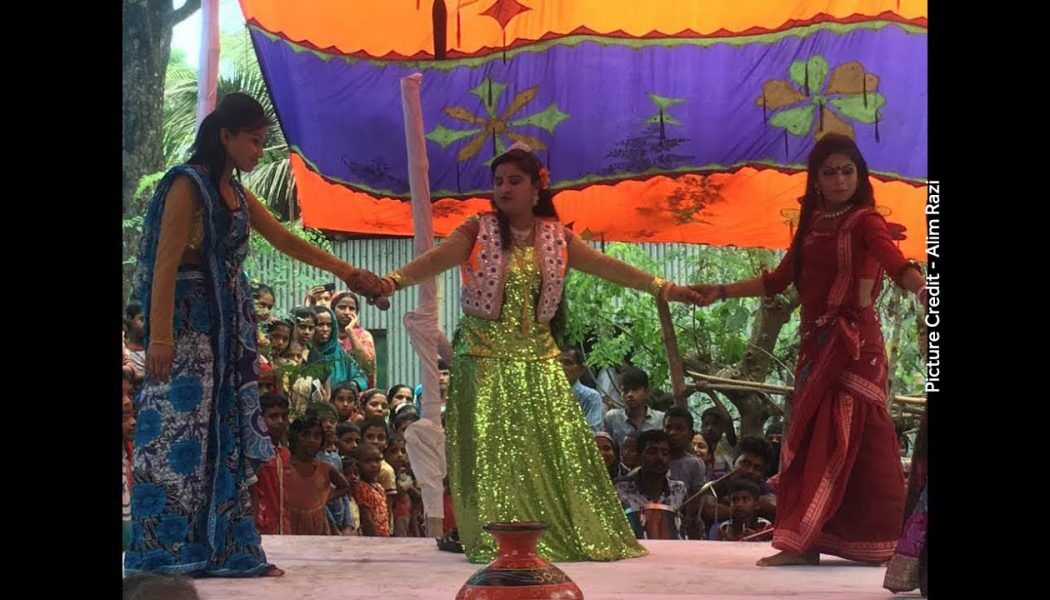Alkap Dance is based on Folklore and Mythological stories with a comical sketch known as Kap. It is popular in Rajmahal hills of Jharkhand, Rajshahi, Murshidabad and Malda regions of West Bengal. It is also famous in Chapai Nawabganj and Randajshahi in Bangladesh. Alkap is generally associated with the Gajan Festival of Lord Shiva.
Kaap means “Kavya” and Aal means “Part of the Verse” or “Sharp”. Alkap is a combination art of Music, Dance and Theatrical Presentation. It is normally performed by a group of 10 to 12 performers and led by a Sarkar (Master or Guru). The group also include two or three young men called Chhokras, one to two Gayens (Singers), Dohar, Choirsters and Musicians. There are five parts in the Alkap presentation – Asar Vandana, Chhora, Kaap, Baithaki Gaan and Khemta Pala.
Alkap started as a way to entertain the Rural Folks by portraying Mythological Stories, instances of Social Injustice and several other interesting topics. Asar Vandana is a Prayer Song before commencing the dance. Chhora is performed by young boys of the group reciting poems related to the dance act. During Kaap, some verses are sung and dance is performed. It is followed by Baithaki Gaan, another musical show. In the last form Khemta Pala, the group depicts a story in the form of dance and songs.
Watch a short video of the Alkap Dance
